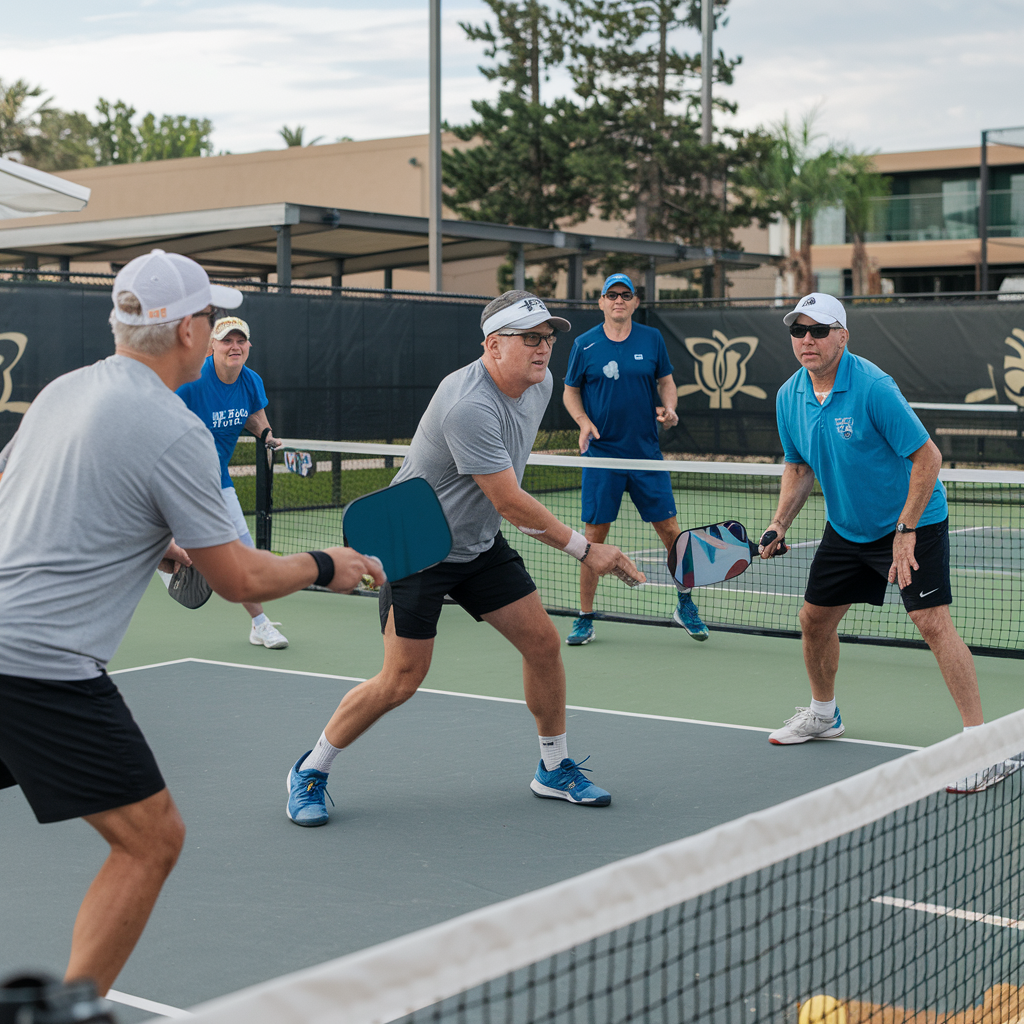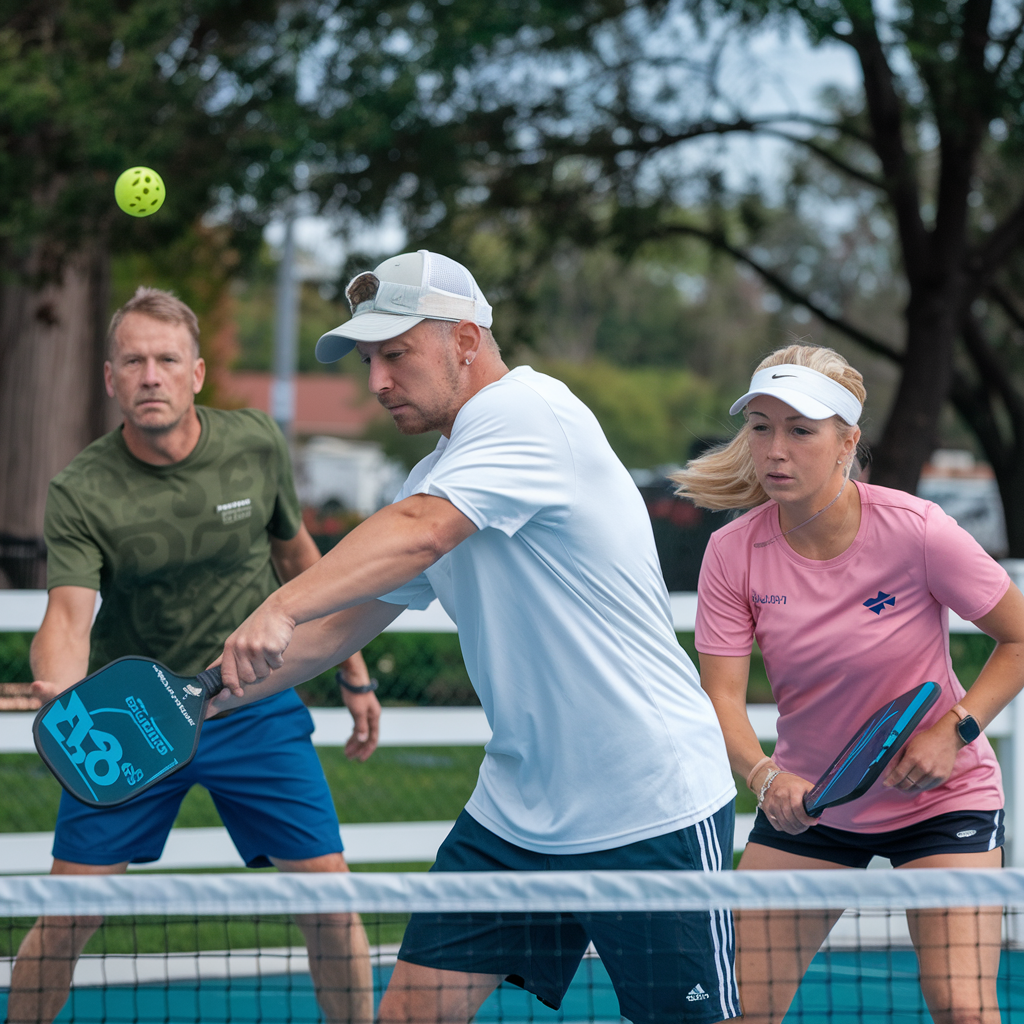Physical Address
304 North Cardinal St.
Dorchester Center, MA 02124
Physical Address
304 North Cardinal St.
Dorchester Center, MA 02124

Pickleball may seem like a trendy, new sport, but its roots go back more than 50 years. What started as a casual backyard game is now one of the fastest-growing sports in the world. In this post, we’ll take a look at how pickleball came to be, its quirky beginnings, and how it has grown into a worldwide phenomenon enjoyed by millions—especially among the 50+ crowd.

Pickleball was born in the summer of 1965, on Bainbridge Island, Washington. The creators of the game—Joel Pritchard, Bill Bell, and Barney McCallum—were simply looking for something to keep their families entertained. They had a badminton court, but no shuttlecock, so they improvised. Grabbing a wiffle ball, some paddles, and lowering the net, they accidentally created a new game. Little did they know that their backyard invention would grow into something much bigger.
Fun Fact: Contrary to popular belief, pickleball wasn’t named after a dog named “Pickles” (though one of the families did later have a dog by that name). Instead, the name came from the term “pickle boat,” a reference to the leftover rowers in crew racing, much like the mix of sports used to create the game.
In the beginning, the rules were simple, and the game was very casual. It was a fun way for families and friends to spend time together. But over time, it became clear that pickleball was more than just a backyard activity. By the early 1970s, the game had spread beyond Washington State, and its popularity grew rapidly, especially as it was introduced in schools and community centers. In 1972, the first official pickleball corporation was founded to promote the sport and develop equipment specifically for it.
As the sport matured, so did the rules. What started with homemade paddles and makeshift courts eventually led to standardized equipment, including the wooden paddles and lighter wiffle-style balls used today. By the late 1970s and early 1980s, the game’s popularity was picking up steam across the United States.
It didn’t take long for pickleball to become a staple in retirement communities, especially in Florida and Arizona. Why? The game’s low-impact nature made it accessible for people of all ages, especially seniors. Unlike tennis, which can be hard on the joints, pickleball provides a fun, fast-paced game without the physical strain, making it ideal for staying active later in life.
The first national pickleball tournament was held in 2009, solidifying the sport’s place on the competitive scene. Since then, professional leagues and championships have emerged, attracting players of all skill levels. By 2015, the number of pickleball players in the U.S. had grown to over 2 million, and it’s been climbing ever since.
Fast forward to today, and pickleball is more than just a game—it’s a global sport. The USA Pickleball Association (USAPA) estimates that there are now over 4.8 million pickleball players in the U.S. alone, with courts popping up in countries around the world, including Canada, the UK, Spain, and Australia. The sport’s inclusive nature has contributed to its widespread appeal. Whether you’re a competitive player or just playing for fun, there’s a place for you in the pickleball world.
The COVID-19 pandemic also played a role in pickleball’s explosive growth. As people looked for safe, socially distanced activities, pickleball—with its smaller court size and less physical contact—became a perfect option.
Another Fun Fact: There’s even talk of pickleball making its way to the Olympics someday!
So, why has pickleball grown from a backyard game to an international sport? It comes down to a few key factors:
With more courts, players, and tournaments than ever before, it’s clear that pickleball’s popularity isn’t going to slow down anytime soon. The game’s appeal spans generations, making it a sport for everyone, whether you’re 15 or 75. Looking ahead, pickleball will continue to grow globally, and it may even secure its place on the world stage in the coming years.
From its humble beginnings in a backyard to its current status as an international sport, pickleball’s rise is nothing short of impressive. It’s easy to see why people of all ages, especially seniors, have embraced the game. Whether you’re just starting or have been playing for years, there’s no denying that pickleball is here to stay.